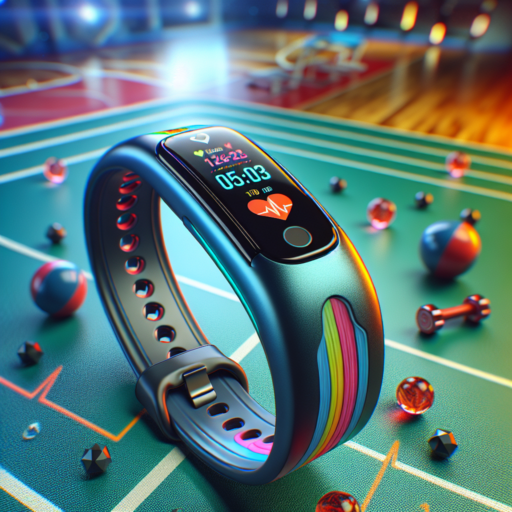Are heart rate bands accurate?
The question of the accuracy of heart rate bands is pivotal for both fitness enthusiasts and professionals who rely on these devices for training and health monitoring. Heart rate bands have evolved significantly, employing sophisticated technology aimed at providing precise readings. However, the accuracy can be influenced by various factors, including the type of activity, the position of the band, and the individual’s physiology.
Factors Influencing Accuracy
- Type of Activity: The motion involved in certain activities, such as weight lifting or high-intensity interval training (HIIT), can sometimes interfere with the signal, leading to less accurate readings.
- Position on the Body: The positioning of the band plays a crucial role in accuracy. Bands worn closer to the heart, typically around the chest, tend to provide more accurate readings than those worn on the wrist.
- Individual Physiology: Factors such as skin thickness, tattoo presence, and even hair density can affect the band’s sensor ability to accurately detect heart rate.
Despite these considerations, heart rate bands designed by reputable manufacturers and using the latest technology tend to offer a high degree of accuracy for most users. They continuously improve algorithms and sensor technology to reduce discrepancies and provide users with valuable data for tracking their physical activity and health. Nonetheless, for clinical-grade data, particularly in medical settings or for detailed analysis, professional-grade equipment might still be necessary.
What is the most accurate heart rate strap?
Identifying the most accurate heart rate strap involves sifting through various models, each touted for precision and performance. A consensus among fitness experts and consumer reviews points towards a few standout options. Premium brands often come to the forefront due to their advanced technology and rigorous testing protocols. These straps not only promise accuracy but are designed with comfort and durability in mind, ensuring that they can withstand intense workouts and diverse weather conditions.
Key Features of High-Accuracy Heart Rate Straps
The accuracy of a heart rate strap greatly depends on several key features. Firstly, real-time tracking capabilities are crucial for immediate feedback during exercise. A high-quality strap also incorporates advanced connectivity options, such as Bluetooth Low Energy (BLE) and ANT+, ensuring seamless pairing with a wide range of devices. Additionally, the strap’s sensor technology and algorithm sophistication play a significant role in minimizing discrepancies and delivering precise heart rate data.
Moreover, the most accurate heart rate straps offer a blend of comfort and utility. They feature soft, adjustable materials that prevent slippage and skin irritation during prolonged use. This ergonomic design is essential for maintaining optimal sensor contact with the skin, which directly influences the accuracy of heart rate readings. Furthermore, these straps often come equipped with long-lasting battery life and water-resistant capabilities, making them suitable for all exercise environments and weather conditions.
No se han encontrado productos.
Is a heart rate strap better than a watch?
When discussing the accuracy and reliability of heart rate monitoring devices, the debate between using a heart rate strap and a smartwatch is ongoing. Heart rate straps, often worn around the chest, are known for their precision. They work by detecting electrical signals sent by the heart, providing real-time data that is often considered more exact than their wrist-worn counterparts. This is because chest straps monitor the heart’s activity directly from its source, reducing the margin of error seen in devices that rely on optical sensors, like watches.
Comfort and Convenience
However, when it comes to comfort and convenience, watches may have the upper hand. Wearing a device around your wrist is less intrusive and more suitable for all-day use compared to a chest strap, which might not be as comfortable to wear for extended periods. Smartwatches not only track your heart rate but also offer a variety of other functionalities like step counting, sleep tracking, and even smartphone notifications, making them more versatile.
Use Case Scenario
The decision between a heart rate strap and a watch often comes down to the specific use case. For athletes or individuals engaged in rigorous training who require the most precise heart rate data to fine-tune their workouts, a chest strap is likely the better option. Meanwhile, for everyday fitness enthusiasts interested in general health monitoring and the convenience of having multiple features in one device, a smartwatch could be more appropriate.
While the accuracy of heart rate straps is typically higher, it’s important to consider factors like comfort, convenience, and how you plan to use the device. Whether one is better than the other depends on personal needs and preferences, highlighting the importance of evaluating your own lifestyle and fitness goals when choosing between these technologies.
Is a heart rate chest strap worth it?
When evaluating the efficiency and accuracy of different heart rate monitoring devices, the chest strap occupies a unique position. It’s designed to wrap around the torso, directly capturing heart rate data from the electrical signals your heart emits. This method is widely recognized for its precision, making it a favorite among athletes and fitness enthusiasts who require detailed and accurate monitoring of their heart rates for optimal training and performance analysis.
Proximity to the Heart
One of the core advantages of a heart rate chest strap is its proximity to the heart. Unlike wrist-worn devices or smartwatches, which can be affected by movements or poor fit, a chest strap maintains a closer and more consistent contact with the skin, reducing the likelihood of signal disruption or inaccuracies. This nearness allows for a more direct measurement of heart activity, which is critical for those who rely on precise data to gauge workout intensity or cardiovascular health.
Convenience and Comfort
While the idea of wearing a device around the chest might seem uncomfortable at first, modern chest straps are designed with ergonomics and user comfort in mind. Made from soft, flexible materials, they can be easily adjusted to fit snugly yet comfortably around the chest, ensuring that they do not interfere with movement or exercise routines. Additionally, many are equipped with Bluetooth connectivity, enabling seamless integration with smartphones, watches, and fitness equipment for real-time monitoring and data analysis without the need for cumbersome wires or additional adapters.
In the context of dedicated training sessions or the pursuit of health goals, the value of a heart rate chest strap cannot be overstated. Its ability to provide accurate, real-time heart rate data makes it an indispensable tool for optimizing workouts and tracking physiological changes over time. Whether you’re a professional athlete fine-tuning your performance, or a health enthusiast seeking to maximize your exercise efficiency, the heart rate chest strap offers a level of precision and convenience that is hard to match with other devices.




